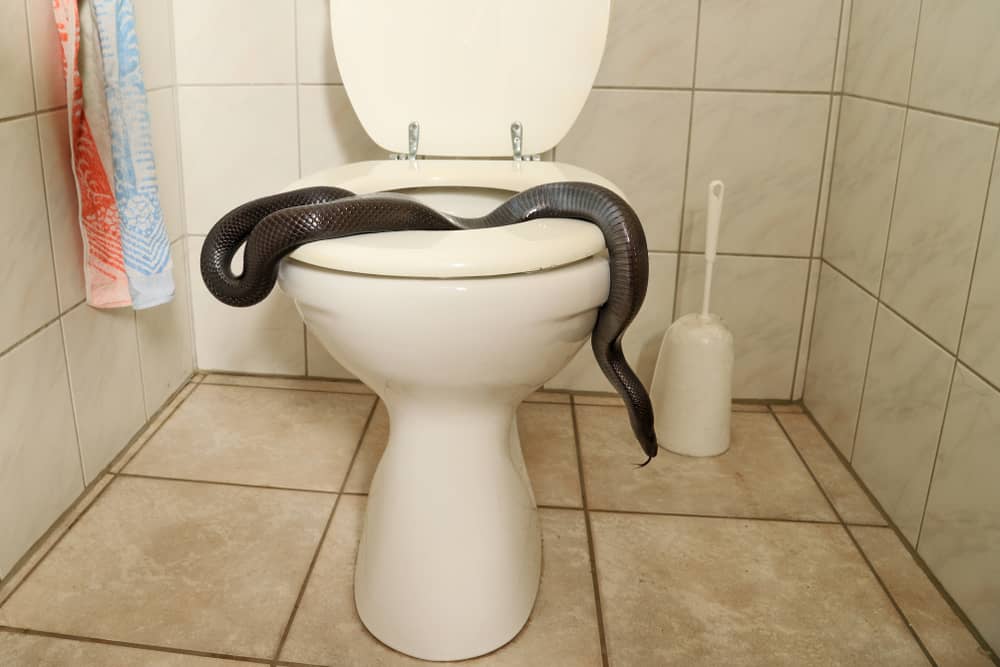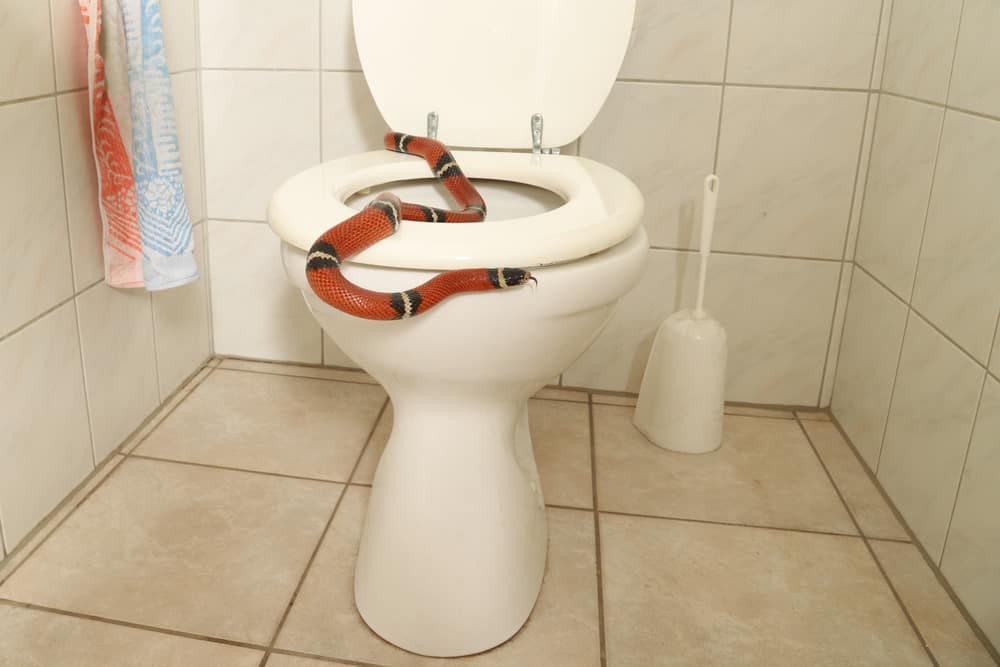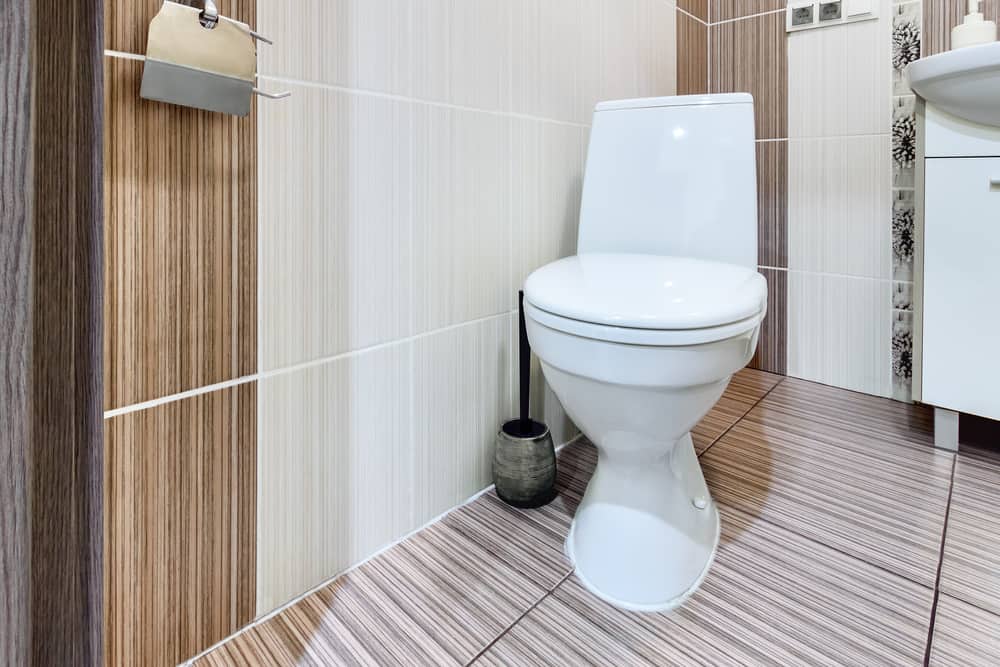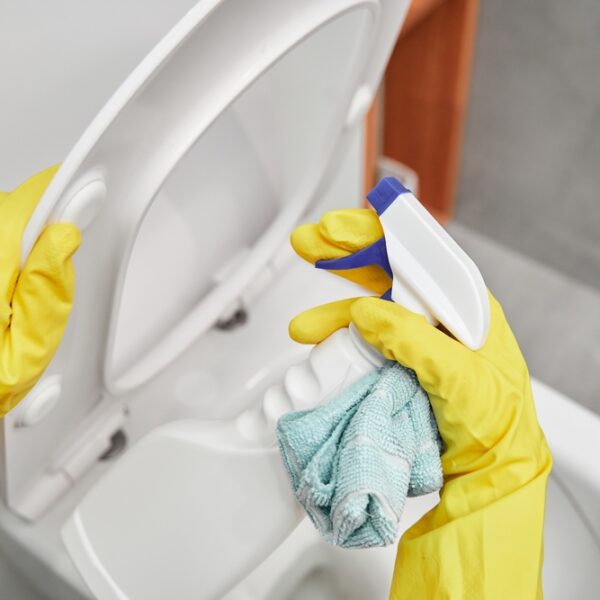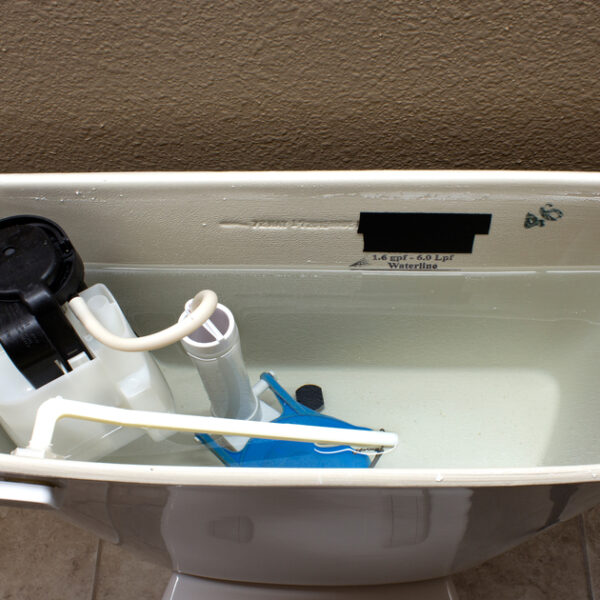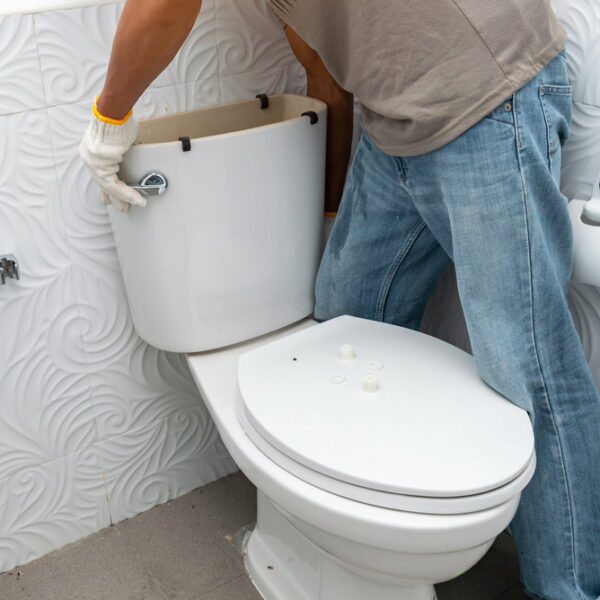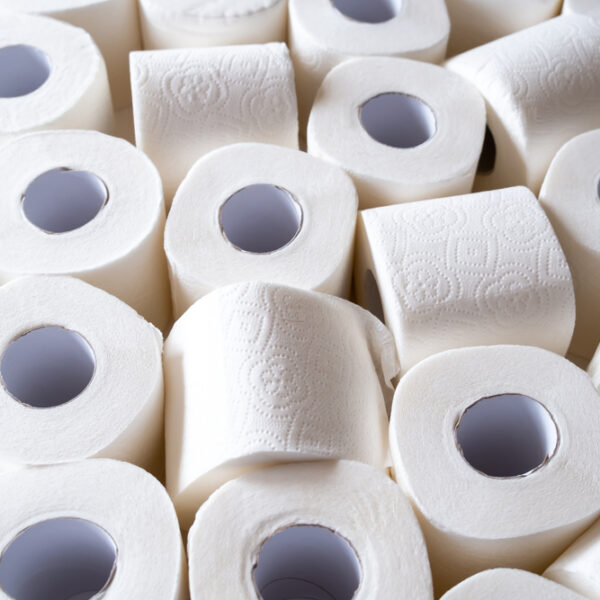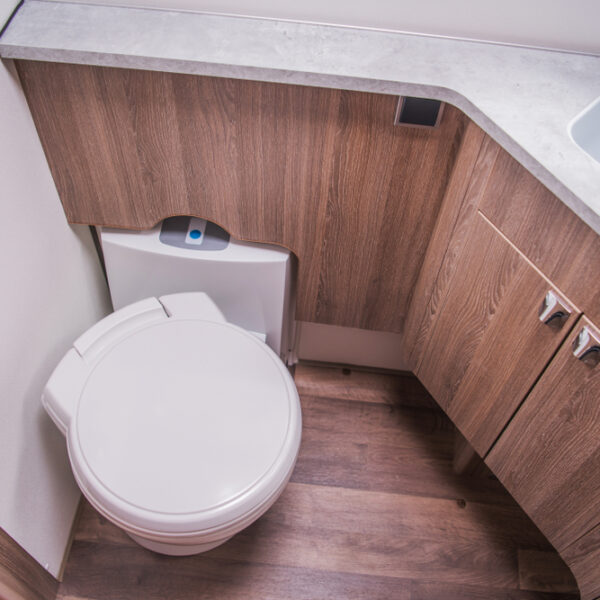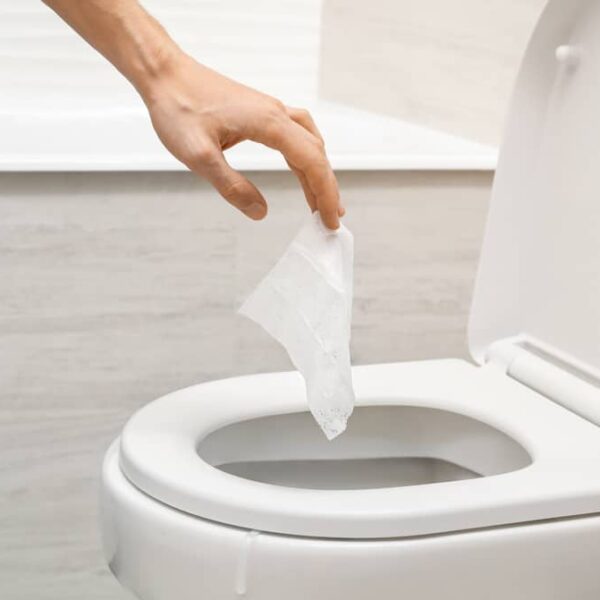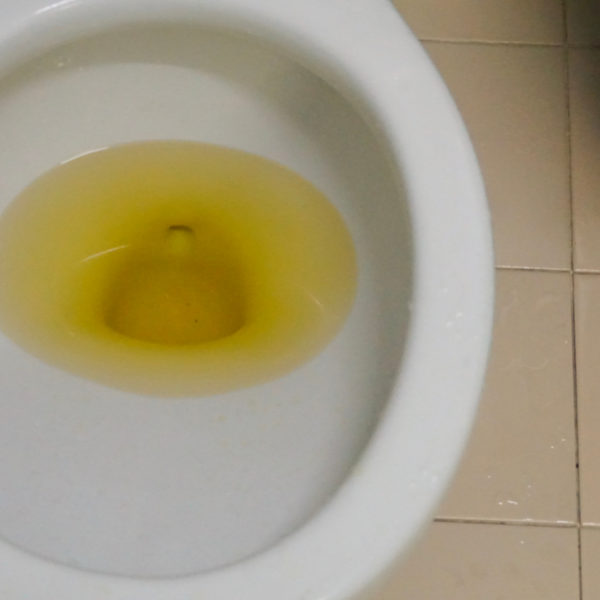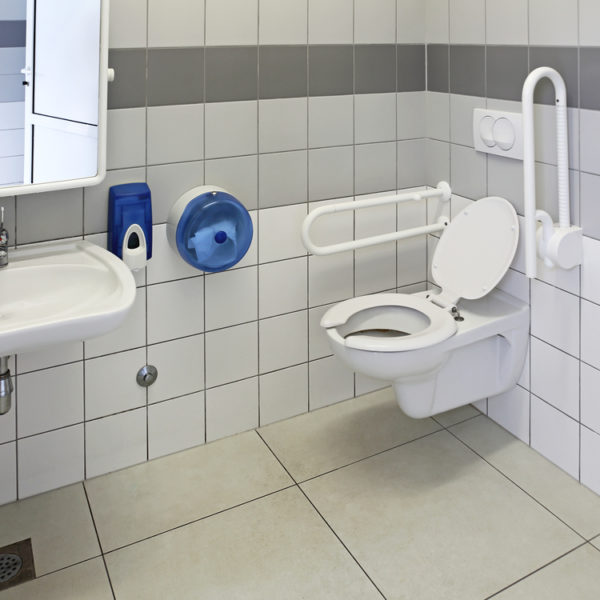Snakes are typical but unwanted toilet visitors in the areas where their native habitats are, and you can find reported cases of these reptiles appearing in toilet bowls and bathtubs. Such occurrences are understandable since toilets are dark, moist, and quiet environments with plenty of water.
Additionally, a sewage system provides food, including rats and bugs. In most cases, stray snakes only look for a comfortable shelter, but there is always a possibility of biting you from the toilet bowl when feeling endangered. The question is, how do snakes get in the toilets? Let’s see.
How Does a Snake Get In Your Toilet?
Snakes live in places with high temperatures, and you can often find them in the toilet if you live in South America, Australia, and some states in the US.
These reptiles spend the most time in hot and sunny spots and looking for water sources. Places like toilets, sewers, and pools are quiet and dark zones providing conditions for a few snake species.
On the other hand, snakes are cold-blooded, meaning they can’t maintain their body temperature. Therefore, they can’t stay in pipes for long, and lack of thermoregulation forces them to look for a way out sooner or later.
Interestingly, you can see young snakes in the toilet more often because of their size. They can pass through the pipes, windows, doors, and gaps in the foundation or flooring.
Convenient entries
A crucial trait influencing the snake’s ability to enter the toilet bowl is its body shape. Since non-venomous snakes are slimmer with oval heads, they can easily maneuver through the pipes.
A loose septic lid in the septic tank can be a possible entrance for these reptiles. However, it rarely happens they go there with a purpose. In most cases, they accidentally fall into the septic tank and then find their way out through the pipes. It is more likely to go in your toilet’s direction instead of climbing upside.
Another option is ventilation pipes. Since they connect the roof with the plumbing system, it is an excellent way for snakes to go down. Therefore, having pipes with curved ends is a better option since these reptiles are less likely to choose such a complicated way to get down.
If you live in a region known for many snakes living around, you should consider buying a vent hood. This device successfully stops these unpleasant creatures from entering your home.
Finally, checking trees around your home is necessary, particularly if you have a bathroom on the first or second floor. The window beside the tree gives convenient entry to the snakes looking for rodents.
Be particularly careful with poisonous baby snakes. They can be more dangerous than adults because they can’t control the amount of venom they release when biting.
Things to Do When Spotting a Snake In the Toilet
The crucial thing is to be as calm as possible when seeing a snake in the toilet bowl. It is more likely to see a non-venomous one that can’t harm you. Remember that any sudden movement or screaming will make a snake feel threatened, resulting in a probable attack.
The best option is to isolate your unwanted visitor by closing the toilet’s lid to prevent it from hiding elsewhere. If you are too scared, it will be enough to close the door and call the rescue service to remove a snake safely.
Keep in mind that there are a few things you should do no matter how frightened you are:
- Never try to flush the toilet because it is impossible to get rid of the snake in that manner
- Avoid catching a snake despite having the necessary tools
- Give your best not to panic
Snakes Entry Prevention
Crucial actions you can take to prevent snakes from entering your bathroom include:
1. Install a vent hood and adequate pipes
After buying the necessary material in a local store, you can install a vent hood on your own. Always pick out pipes with a curved ending and seal entries larger than 0.25 inches (6.35 mm). Besides snakes, these measures will also prevent rodents, frogs, and insects from entering the house.
2. Prevent rat infestation
Be aware that snakes rarely enter a sewage system by accident and typically wander there looking for food. You will most likely prevent them from entering after eliminating rodents.
3. Check before sitting on a toilet
Be careful and always check before using a toilet, just in case. If you live in regions known for snakes entering the toilet bowl, it will be better to avoid spending too much time there.
4. Clean the septic system
You should regularly clean and inspect the septic system, including calling home inspection to:
- Clean septic tanks
- Look for deterioration and corrosion
- Check the tank’s integrity
5. Clean the drains
It is recommended to occasionally pour the caustic soda, sulfur powder, engine oil, or kerosene mixed with water down the toilet. However, some of these mixtures can damage your pipes, so you should be careful not to overuse them.
Ways to Identify Snakes Type
Most people freak out when spotting a snake, and there is a minimal possibility of taking a closer look at it. However, it can help you react correctly in situations when one wanders into your toilet. Sometimes, adequate assessment can save your life.
The first thing to check is a snake’s head shape. The triangular head is typical for poisonous snakes. Unfortunately, you can hardly determine a non-venomous snake’s head shape while moving, particularly if you are inexperienced.
Venomous vs. non-venomous snakes |
||
| Trait | Venomous snakes | Non-venomous snakes |
| Head shape | Triangular | Oval |
| Body look | Colorful or with a pattern | Typically monochrome |
| Pupils | Elliptical or vertical slits | Rounded |
| Tail | With rattle | Without rattle |
| Venom presence | Yes | Not |
| Killing method | By venom | Constriction |
Unfortunately, you can’t rely on the snake’s color, either. Venomous snakes are typically colorful with recognizable patterns, while non-poisonous species often look ordinary and uniform. However, there are always exceptions to the rule.
For instance, the non-venomous scarlet kingsnake, living in southeastern and eastern parts of the United States, has bright yellow, brown, and black patterns. Even though this species looks dangerous, it is entirely harmless, but it makes this way of identification useless.
The best option is to differentiate snakes’ pupils. Typically, they are elliptical in venomous snakes, while non-venomous species have rounded pupils. However, looking at a snake’s eyes is a dangerous identification method, so not many people are prepared to rely on it.
In terms of size, both snake types exist in various sizes. Therefore, this indicator is not exceptionally reliable.
The only thing that can warn you for sure is rattles on some poisonous snakes’ tails. Venomous species with rattles make a loud clicking sound and warn of attack. If you hear this sound, you should run out of the bathroom as soon as possible and call a professional to help.
What to Do When a Venomous Snake Bites You?
Venomous snakes release venom after biting a victim, causing blood coagulation and the formation of blood clots. The poison also damages the brain, heart, kidneys, and lungs by traveling through circulation. Your only chance to survive is to receive appropriate health care.
Call the ambulance and animal control
Time is crucial when the snake bites you, and you must receive an antidote as soon as possible. Animal control will deal with snake catching after identifying the exact species. Only that way can you receive the appropriate therapy.
Find a safe place and don’t move
Close the bathroom door to be safe and away from the snake, but avoid moving too much after calling the competent services. Any physical activity will speed up the poison through the body and reduce your chances of survival.
Wash the wound
Wash the wound with soap and water to reduce poison from entering the body. Despite what you see in movies, never try sucking out the toxin. It can enter your circulation through a tooth with caries or a tiny wound in your mouth, making the situation even worse.
Remove jewelry and watch from a bitten hand
Remove the watch and jewelry, particularly rings, from your hand because of swelling that will appear on the affected area.
What to Do When a non-Venomous Snake Bites You?
Non-poisonous snake bites won’t endanger your life, but you should call for an emergency anyway. It is better to have an expert identify the species correctly. Receiving an antidote is unnecessary in this situation, but a doctor should examine the wound for a possible residual piece of tooth.
It is essential to clean and disinfect the bite site to prevent infection and complications caused by impurities. Otherwise, you can expect swelling, pain, redness, and heat as the first signs of infection.
Sometimes, a snake can bite you above a bigger blood vessel and cause extensive bleeding. In this case, you should press the wound to make compression while the ambulance comes.
Summary
Knowing how snakes can get inside your toilet can help prevent such unpleasant and potentially dangerous situations. Since it can be tricky to recognize snake species, your best chances are to react appropriately, let professionals deal with the snake, and call the ambulance in case of a bite.
